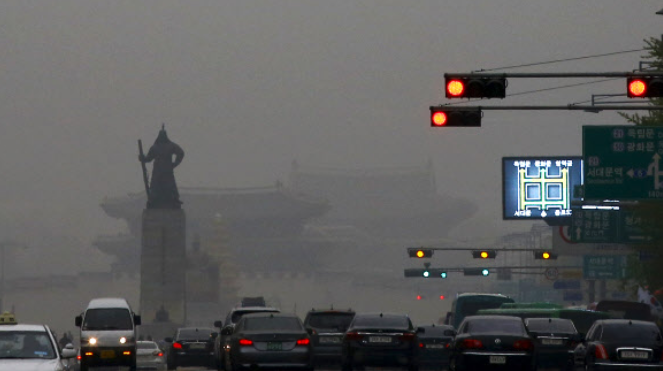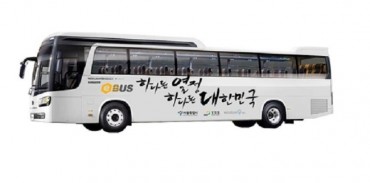SEOUL, Jan. 25 (Korea Bizwire) — Kang Byung-min, a 33-year-old office worker living in Geumho in center-east Seoul, starts his day with a morning ritual that he admits has become somewhat obsessive but unavoidable.
He turns on the palm-sized monitor placed against the window to check the day’s fine dust level. He checks air quality again on the mobile homepage of Naver, the biggest Internet portal in South Korea, and cross-checks with a weather app on his smartphone.
“That helps me decide whether I should wear an anti-dust mask and how I should plan for the night,” Kang said. “As long as I do all this, I’m ready to leave home.”
Bracing for another stuffy day has also become part of the daily chores for Lee Hye-jin, a 44-year-old working mother with two kids attending elementary school. She says she’s been searching for indoor places she and her husband can take the kids to and spend time together.
“The list of venues runs out quickly, and we’ve basically set our feet in nearly every kids’ cafe around Seoul,” she said. A kids’ cafe is a large-scale indoor playground that comes with a cafe lounge for adults, a popular private facility among younger parents.
“I get claustrophobic in there seeing a whole flock of kids run and jump around in limited space but consider it something I have to live with,” Lee added. “It’s almost suicidal letting children outside in this weather, let alone the cold.”
Worsening air pollution from harmful particulate matters is affecting the lifestyle of many Koreans across the generations. They don’t hesitate to buy bundles of anti-dust masks online. Getting an air purifier or clothes dryer in a household used to be seen as out of the ordinary or extravagant. But they are now must-have items that fly off the shelves.
Last week’s alarming fine dust level further stoked irritation and fear among the public. Korea recorded an average of 80 micrograms per cubic meter (㎍/㎥) of PM10, from Jan. 15-21, falling under the normal range, according to Air Korea, an online air pollution tracker run by Korea Environment Corp. PM10 refers to atmospheric particulate matter that have a diameter of less than 10 micrometers.
But the density levels for some regions fell into the “bad” category, with the central regions of Incheon, Gyeonggi Province and Seoul reaching levels of 117 ㎍/㎥, 125 ㎍/㎥ and 100 ㎍/㎥, respectively, over the cited week. It prompted the authorities to issue advisories, recommending against outside activities.
“I’d only been out for 10 minutes or so, and my eyes and throat were already sore,” said Kim Young-tae, a 67-year-old retiree from Seongnam.
Some metropolitan governments rolled out temporary restrictions to reduce road traffic. Notably, the Seoul Metropolitan Government’s bold decision to offer three days of free transportation during the rush hour stirred up a mixed response of outcry and approval over its effectiveness.
A flurry of complaints crowded popular Internet community sites and social media pages, illustrating the frustration over the grueling reality of “living with the windows shut for a week.”
“Will I ever get a chance to air out the house? … Being stuck at home is as suffocating as being outside,” an Internet user wrote in a posting. Some comments moaned in a self-mocking way about living in Korea and insisted “applying for immigration to another country like Australia and Canada might be the only way to survive.”
The exact cause of the particulate pollution remains unclear. While the consensus largely points to domestic factors, energy-consuming giant China is partly blamed for contributing to the rising fine dust level in Korea. A joint air quality study by Korea and U.S. government agencies released last year showed results buttressing such a hypothesis. It claimed that about one-third of the seasonal fine dust comes from the neighboring country.
Last year’s data from the Seoul city government show that the average density level in the center of the capital decreased yearly from 69 ㎍/㎥ in 2003 to 41 ㎍/㎥ in 2012. But it rebounded to 46 ㎍/㎥ in 2014 and rose to 48 ㎍/㎥ in 2016.
“It’s a bad environment and feels like it’s getting worse every year,” Kim said. “Each one of us has just got to adapt in our own way to embrace it — or what other choice do we have?”
Lee told how she came to realize that there might be fewer chances for future generations to “cherish life in beautiful natural weather.”
“But I bet there will be man-made places that no one in our time could’ve ever imagined, like a virtual reality park or something, because people find alternatives after all.”
(Yonhap)







